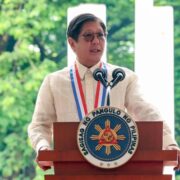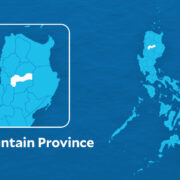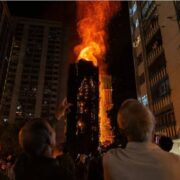Calamity as canvas: An artist-poet collaboration
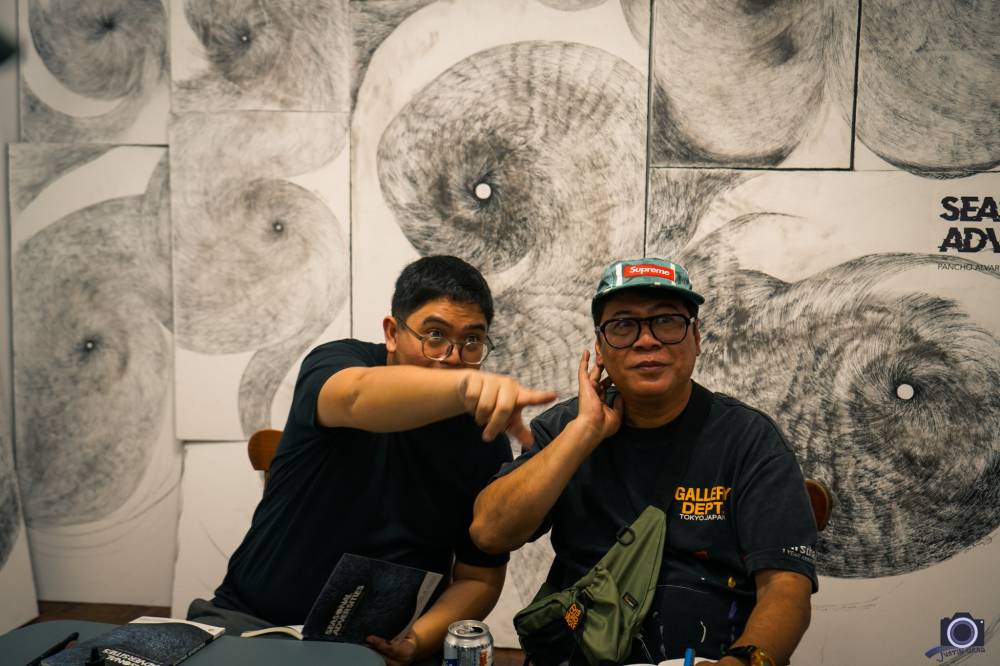
“Seasonal Adversities,” a one-day show pairing the art of Pancho Alvarez and the poetry of Joel M. Toledo, has an online version worth checking out—both for its lyricism and activism.
“Adversities” draws its tone and texture from the natural and man-made calamities periodically shaping the Filipino experience, made starker these days by the public works corruption scandal.
The exhibit held on Oct. 19 at Alvarez’s Studio Maya in Quezon City can be seen at panchalvarez.com/seasonal-adversities, and is also presented as a book under the same title published by the University of Santo Tomas (UST).
Bellagio grant
The collaboration between the two artists owes much to the Rockefeller Foundation (RF) grant that they received in 2023 and sent them to Bellagio, the lakeside town in Italy’s northern region of Lombardy.
Toledo’s stay there was his second time. In 2011, he first availed himself of the monthlong fellowship, which is open “typically in February until March each year” to as many as 100 artists worldwide.
A three-time Palanca awardee, Toledo was able to complete an earlier book of poetry, “Ruins and Reconstructions,” through his 2011 fellowship.
He had submitted an initial batch of about 20 poems that were a “deep dive” into tragedy, as he recalled—his mother’s death a year earlier and the larger tragedy of Tropical Storm “Ondoy” (international name: Ketsana) in 2009. Toledo recalled joining efforts at that time in his Quezon City neighborhood to provide aid and shelter to “friends and other residents who suddenly found themselves homeless.”
Toledo’s second residency in Bellagio was prompted by Alvarez, who was applying for a grant for the first time and had suggested to Toledo the idea of presenting a joint project.
The two further secured the required recommendations for their proposal from poets Eric Gamalinda, a past Bellagio alumnus, and Allan Pastrana.
Climate impacts have been a recurring theme in Toledo’s works, including “Adversities.” “I do not necessarily think of myself as a full-fledged ‘ecopoet,’” he said. “But this book is certainly guided by a swelling consciousness of and involvement in the issue of the climate crisis and other environmental concerns.”
Contemplative art
Perhaps there is no greater purpose for an artist than to respond to the times, as opposed to exploring one’s personal themes. Yet despite the shrillness today especially on social media, the poems and artworks by Toledo and Alvarez are more contemplative than indignant. This is also in keeping with the ruminative tone of much of Toledo’s poetry.
“I could be the narrow plank/that leads to a new installation,” he writes with vivid imagery in the poem “Difficult to Mean,” which has the viewpoint of a debris that could have been an evacuee’s meager possessions.
Voice to the people
The same poem would also assume the perspective of the merciless weather itself. “I am the flooding in the highlands,” declares the poem with bitter irony. “Ice-water, dark clouds in the summer./I need to be something you will notice.”
The most relatable perspective is that of the displaced, reeling from a storm: “I don’t aspire for a house/or a garden I could weed or water,” begins the poem “PAGASA,” titled after the weather bureau. “What I call my own: a damp floor/cushions and sheets baking in the sun.”
Asked about the challenge of giving voice to the Filipino masses in English, Toledo said “There’s still this disconnect about language that, I think, we have come to terms with. I believe that we don’t just speak in English as a country but from it—to paraphrase National Artist Gemino Abad.”
“It’s a post-colonial conceit, sure. But one that finds its way into our collective notion of language, even as more and more Filipino and English are becoming intertwined in our daily speech,” added Toledo, who teaches creative writing at UST.
‘Adversities’ in Bicol
“Most of my recent poems embrace this duality, with many local words and terms weaved into this new Filipino-English,” he said.
Alvarez, who hails from Naga City and had served as staff member of its current mayor, former Vice President Leni Robredo, is certainly familiar with the “seasonal adversities” in his home region of Bicol.
“Back when Ma’am Leni was congresswoman of the third district of Camarines Sur, we would always visit those affected by the storm,” he said, recounting one such experience with calamity. “One common thing I see on the ground is families always gather in one area. It is automatic, even without directive from their leaders, they look around and assemble in a common area.”
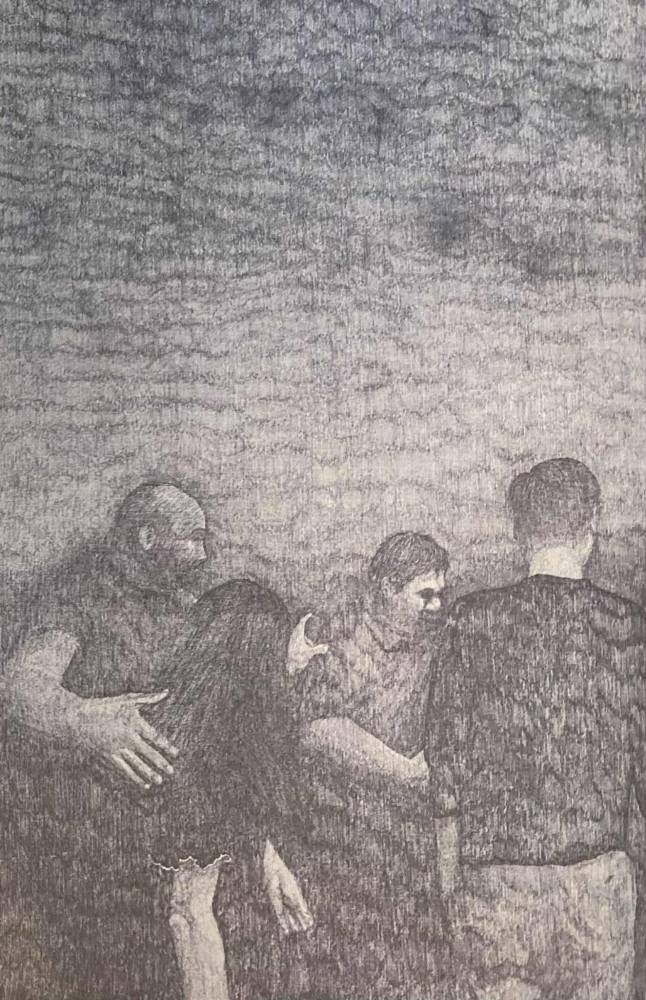
Exploration of chaos
Alvarez’s art is marked by the tension between the abstract and figurative, the dynamic evident in his personal themes, ranging from the cerebral (his abstract works) to the sensual (his flowers series and his erotica). It stands out all the more in his exploration of chaos, disruption, and oblivion left by calamity—from the bare tree of “Perspective” (ink on paper, 36×24 inches, framed), all stark and atmospheric; to the frenzy and desperation conveyed by “We Convene and Sit” (ink on paper, 36×24 inches, framed), a rendition of evacuees huddled together in their flight.
“The piece ‘We Convene and Sit’ is about this experience. It is like breathing. After every tragedy, it is human nature to come together to pick up the pieces,” Alvarez said when asked if his art is drawn directly from memory, from that experience.
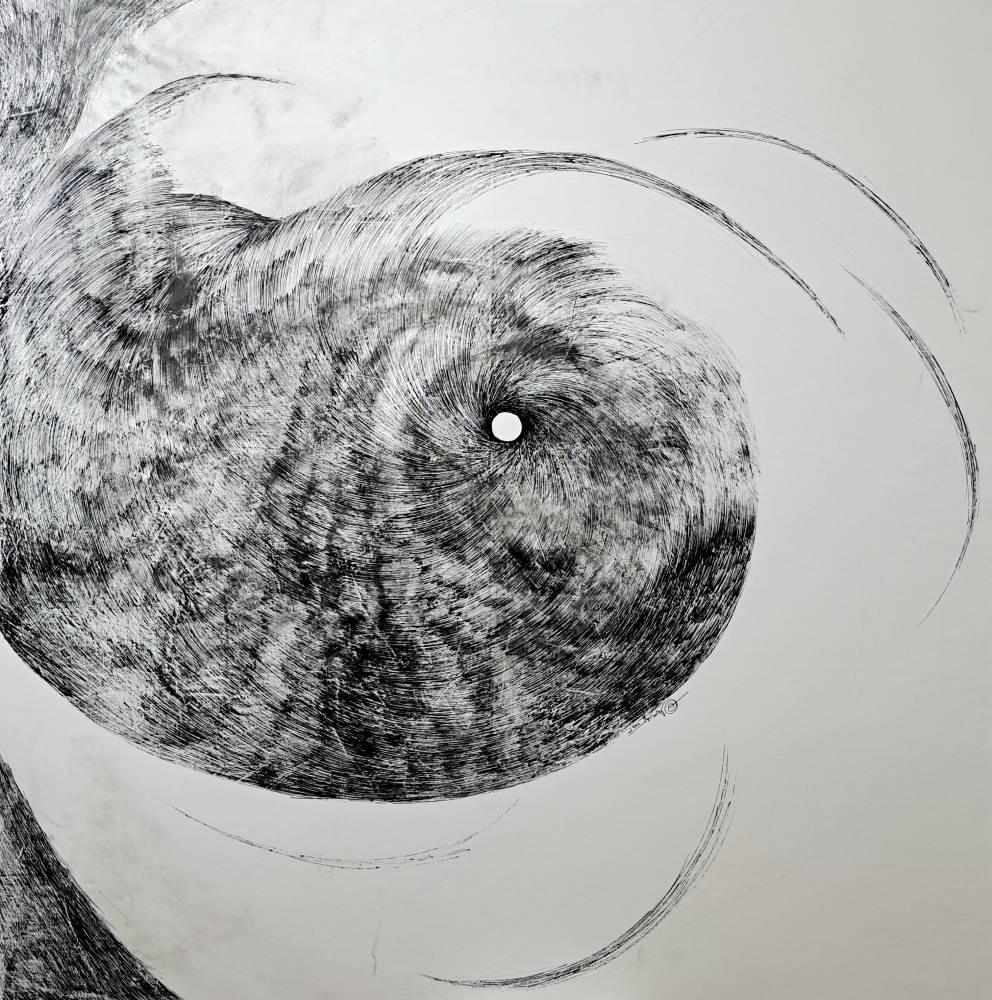
The highlights among Alvarez’s works are his renditions of past cyclones—particularly “Yolanda,” the supertyphoon from 2013 which the country still commemorates 12 years later.



